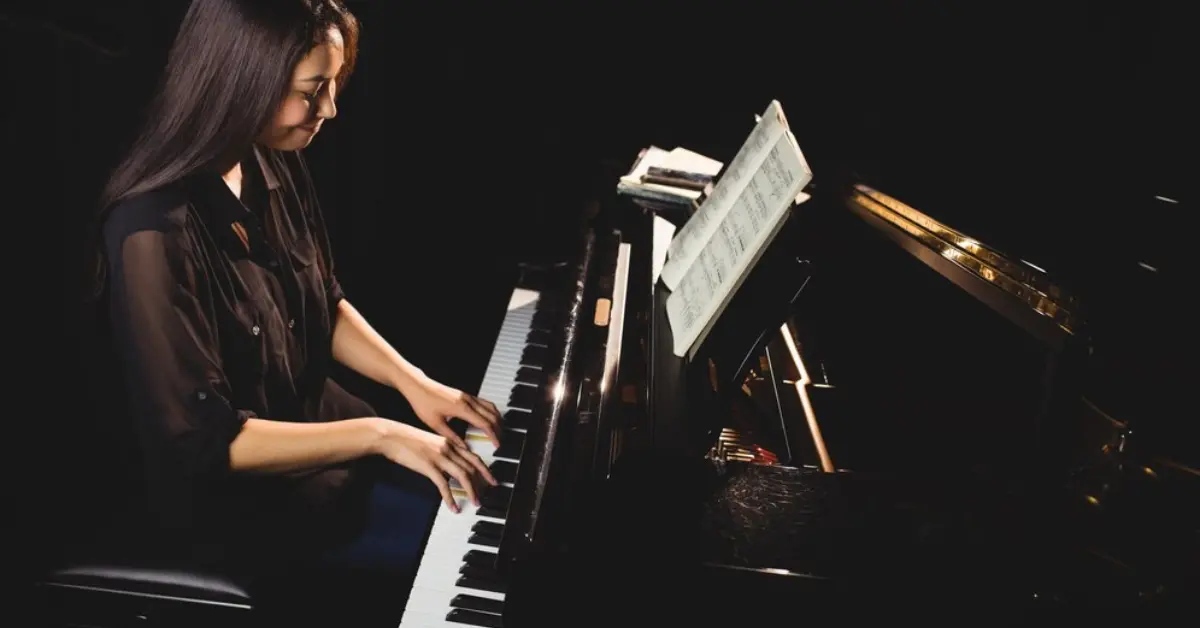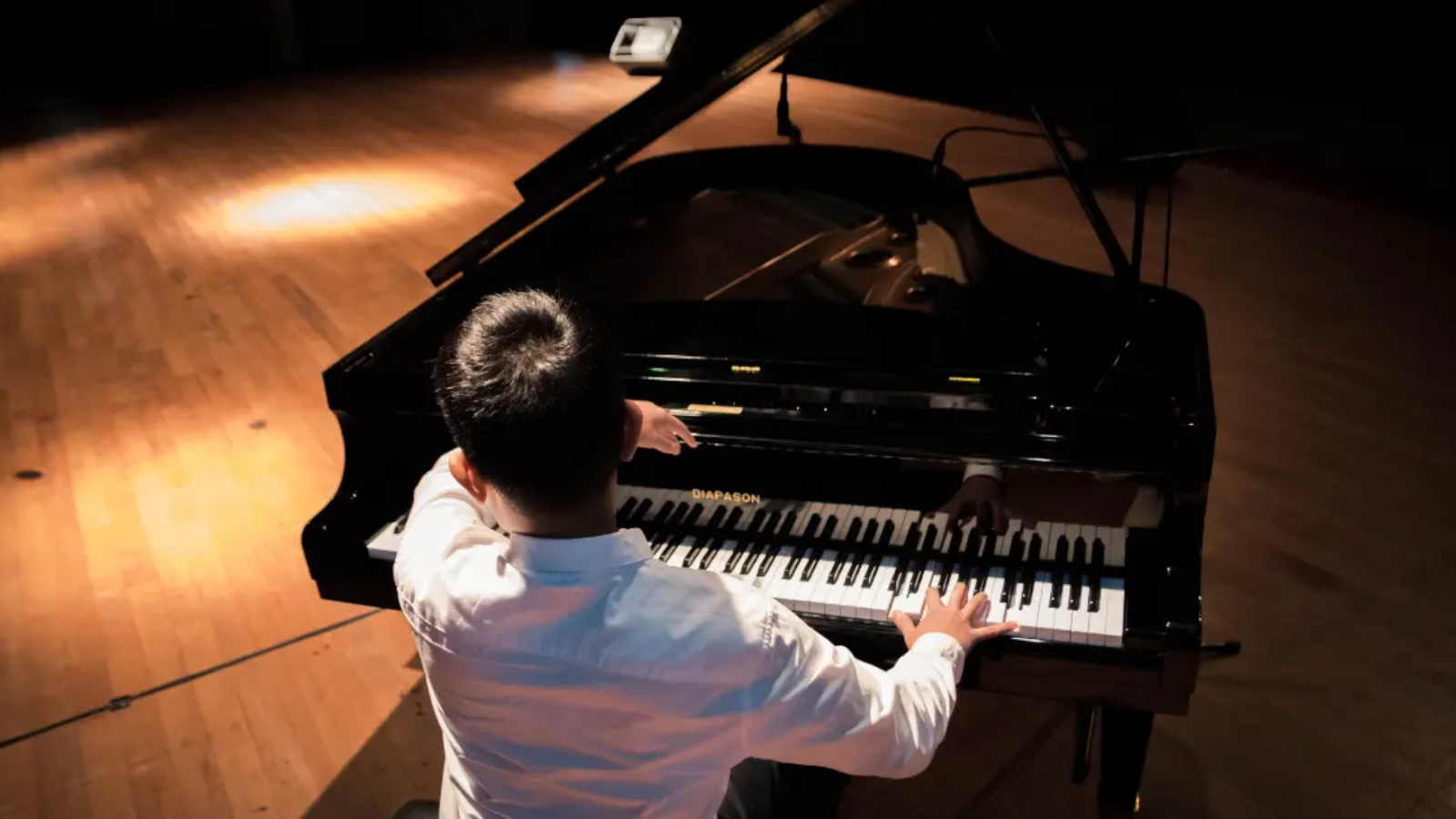Explore how Harmony and Chords in Piano Music bring depth and emotion.

The piano is one of the most versatile instruments in both Indian and Western music. Its ability to express deep emotions through layered sounds has made it a favorite among composers and learners alike. Among its many components, harmony and chords form the foundation of musical expression. For Indian pianists exploring Carnatic or Hindustani influences alongside global genres like jazz and pop, understanding harmony unlocks the true potential of musical storytelling. In this guide, we dive deep into the powerful impact of harmony in piano music, focusing on how it enriches melodies, enhances compositions, and connects cultural styles.
1. What is Harmony in Piano Music?
Harmony refers to the combination of different musical notes played simultaneously to produce a pleasing sound. In piano music, this usually involves playing chords along with melody lines. It gives body, context, and mood to the tune being played.
2. Importance of Harmony in Indian Piano Arrangements
Unlike traditional Indian instruments which focus heavily on melody (raga) and rhythm (tala), incorporating harmony on the piano allows musicians to bridge Indian and Western styles. Harmonized ragas or bhajans performed on the piano bring emotional depth and resonance.
3. Basics of Chords and Harmony
To begin exploring harmony, it’s essential to understand chords. A chord is a group of at least three notes played together.
- Major chords: Bright and happy sounds (e.g., C major – C, E, G)
- Minor chords: Softer and more emotional (e.g., A minor – A, C, E)
- Seventh chords: Add tension and color (e.g., G7 – G, B, D, F)
4. Scales and Chord Construction
Most harmonies stem from scales. The major and minor scales provide the structure for building chords.
- Learn Indian scales (ragas) and how they translate to Western notation.
- Explore how to harmonize ragas using piano chords.
5. Triads: The Foundation of Harmony
Triads are the simplest form of chords—three-note chords forming the base of most harmonies.
- Root: The starting note
- Third: Determines major or minor quality
- Fifth: Adds stability
6. Extended Chords for Advanced Harmony
Once comfortable with triads, pianists can expand into extended chords such as ninths, elevenths, and thirteenths. These are especially useful in fusion music or jazz-influenced Indian compositions.
7. Chord Progressions and Their Emotional Impact
A chord progression is a sequence of chords played one after another. Popular progressions include:
- I – IV – V – I (Happy, conclusive feel)
- ii – V – I (Jazz and semi-classical applications)
- vi – IV – I – V (Modern pop, adaptable for bhajans or light music)
8. Harmony in Western vs. Indian Piano Playing
Western classical and contemporary music rely heavily on harmony, whereas Indian classical music traditionally focuses on melody and rhythm. Piano players in India can now blend both for innovative compositions using:
- Drone notes and harmonized ragas
- Western chord backing for Indian-style vocals
9. Application in Indian Genres
Explore how harmony is applied in Indian music using the piano:
- Film Music: Use of major/minor chords to support emotional scenes
- Bhajans: Simple progressions to accompany vocal leads
- Carnatic Fusion: Blend of ragas with jazz chords
10. Chord Inversions and Their Role
Chord inversions create smoother transitions between harmonies. For example:
- C Major (C–E–G) → First inversion (E–G–C) → Second inversion (G–C–E)
In Indian piano playing, inversions help maintain fluid transitions in fast-paced bhajans or rhythmic patterns.
11. Using Harmony in Composing Piano Pieces
Harmony plays a central role in structuring and composing music. Whether you are writing a bhajan, a Bollywood-style theme, or a contemporary Indian-fusion song, consider:
- Base chords for structure
- Color tones (7ths, 9ths) for emotional depth
- Complementing melody lines with inversions
12. Harmony Exercises for Beginners
- Play a C major scale and harmonize each note using its corresponding chord
- Try harmonizing a simple bhajan using I–IV–V chords
- Use a MIDI keyboard and digital piano app to experiment with harmony layering
13. Digital Tools to Practice Harmony
For Indian learners, combining traditional learning with digital tools is effective:
- Apps like Riyaz and NaadSadhana: Support raga-based practice
- MIDI software like GarageBand or FL Studio: Layer chords and practice harmonies
14. Learning Harmony through Indian Songs
Pick Indian songs that use harmonies (like A.R. Rahman’s compositions) to train your ear. Try breaking them down to identify:
- Chord patterns
- Basslines
- Harmony lines
15. Teaching Harmony to Kids and Beginners
Introducing harmony early builds a strong foundation:
- Begin with simple 3-note chords
- Use Indian nursery rhymes or patriotic songs to make learning familiar
- Encourage two-hand playing: melody on right, chords on left
16. Common Mistakes in Learning Piano Harmony
Avoid these pitfalls:
- Jumping to advanced chords without triad mastery
- Ignoring ear training—always try to “hear” the harmony
- Overcomplicating progressions too early
17. Indian Instruments That Complement Piano Harmony
Some traditional Indian instruments harmonize beautifully with piano:
- Mridangam and tabla: Rhythmic depth
- Flute and veena: Melodic layering
- Tanpura: Drone background for harmonic grounding
18. Exploring Fusion Music with Harmony
Combine Indian ragas with jazz chords or blues progressions to create unique styles. Try blending:
- Raga Yaman with major 7th chords
- Raga Bhimpalasi with minor chords and sus chords
19. Practicing Harmony with a Teacher or Group
Group classes and ensembles offer feedback and introduce different harmony styles. Look for Indian music schools that offer piano instruction integrated with classical or film-based syllabi.
20. Sheet Music vs. By-Ear Learning for Harmony
While sheet music is common in Western training, Indian learners often use by-ear methods. A hybrid approach is best:
- Use notations for Western chords
- Use Indian swaras for melodies
- Develop listening skills alongside reading skills
CONCLUSION
Mastering harmony and chords on the piano is like unlocking a new language in music. It gives structure, beauty, and emotion to compositions—whether you’re interpreting a devotional bhajan, composing a film theme, or simply playing for joy. Especially for Indian learners, blending the traditional with the modern offers endless creative opportunities. By learning the building blocks of harmony, practicing consistently, and experimenting with Indian genres, you can take your piano skills to a new level of depth and expression.
At NMS Musicals, we offer a comprehensive range of musical instruments, including percussion, string, wind, and keyboard instruments. Our services encompass sales, expert servicing, and the manufacture of leather instruments. Explore our diverse collection and find the perfect instrument to suit your musical needs.
Visit our website to browse our offerings: nmsmusicals.in
For a closer look at our products, check out our shop page: nmsmusicals.in/shop
Stay connected with us through our social media channels:
- Facebook: https://www.facebook.com/nmsmusicalinstruments/
- Instagram: https://www.instagram.com/nmsmusicals/?hl=en
- YouTube: youtube.com/@nmsmusicals
Our shop locations are:
- Puducherry: 149, Perumal Koil Street, Heritage Town, Puducherry, 605001.
Map Link: https://maps.app.goo.gl/ejDwBBFEJmd3szxk7 - Chennai: No: 1, 1st Floor, Kandigai Street, TVS Nagar, Korattur, Chennai – 600076.
Map Link: https://maps.app.goo.gl/7oXmB6X7KQsqeuuw9
For inquiries, contact/Whatsapp us at 9500663895 or email us at laxman.m89@gmail.com.
Discover the world of musical instruments with NMS Musicals today!
For a visual overview of our percussion instruments, watch the following video:


 Cart is empty
Cart is empty 
Leave A Comment
You must be logged in to post a comment